
Best food dryer
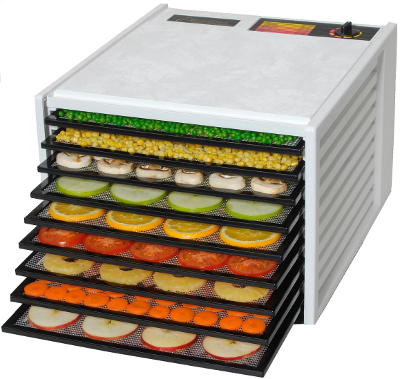 I've alluded to the fact that
we bought a food dehydrator because our climate has too much rain,
clouds, and humidity to allow us to sun-dry very often. I've been
waiting to tell you about what we got because it was a large purchase
(by our standards) and I wanted to give the dryer a few serious test
runs before writing a review.
I've alluded to the fact that
we bought a food dehydrator because our climate has too much rain,
clouds, and humidity to allow us to sun-dry very often. I've been
waiting to tell you about what we got because it was a large purchase
(by our standards) and I wanted to give the dryer a few serious test
runs before writing a review.
What we chose and why
We bought the 9
Tray Excalibur dryer with timer (model number #3926T) for
$237.03 (with shipping included) and splurged on 9 reusable
fruit leather sheets.
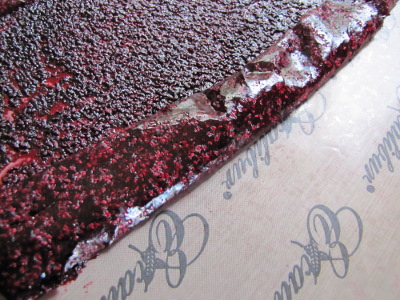 I was pointed to the
Excalibur by my father, who's been using his for years with great
success. The ten year warranty that came free as part of my
special offer made me feel confident about the decision, as did
extensive perusal of reviews on Amazon. In fact, from my
research, the Excalibur seems to be the only serious homesteader-scale
dehydrator worth its salt. We've used the small, cheap, round
dehydrators, and they nearly turned me off drying completely.
I was pointed to the
Excalibur by my father, who's been using his for years with great
success. The ten year warranty that came free as part of my
special offer made me feel confident about the decision, as did
extensive perusal of reviews on Amazon. In fact, from my
research, the Excalibur seems to be the only serious homesteader-scale
dehydrator worth its salt. We've used the small, cheap, round
dehydrators, and they nearly turned me off drying completely.
What I like about our food dryer
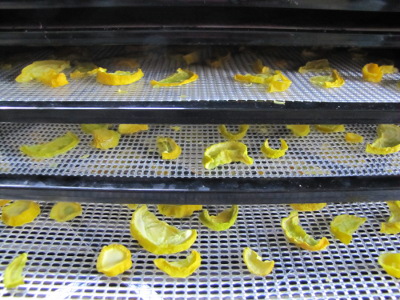 The most important selling
point for the Excalibur is that it works. The heating unit and
fan are in the back, so air is blown nearly evenly across all trays,
which means you're not constantly moving your fruits or vegetables
around to get even drying. I felt like the top and bottom trays
might dry very slightly slower than the middle trays, but only barely.
The most important selling
point for the Excalibur is that it works. The heating unit and
fan are in the back, so air is blown nearly evenly across all trays,
which means you're not constantly moving your fruits or vegetables
around to get even drying. I felt like the top and bottom trays
might dry very slightly slower than the middle trays, but only barely.
The 9 tray model is just
the right size for a serious gardener. If you only want to dry a
few tomatoes here and there, a smaller dehydrator will work for you,
but when I start drying, I tend to have a basket of produce fresh out
of the garden that needs to be dealt with now.
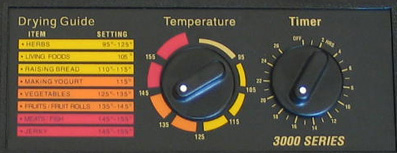 The
timer was definitely worth the extra cash. Rather than having to
start food in the morning and remember to monitor the dehydrator at
intervals throughout the day, I can just check the state of the produce
around bedtime, eyeball how many hours more it needs, and turn the
timer dial.
The
timer was definitely worth the extra cash. Rather than having to
start food in the morning and remember to monitor the dehydrator at
intervals throughout the day, I can just check the state of the produce
around bedtime, eyeball how many hours more it needs, and turn the
timer dial.
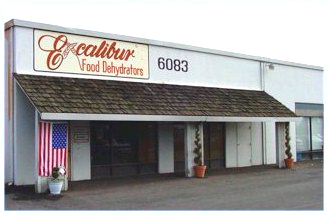 Finally, I was fascinated to
read that Excalibur is a family run business that started as a mom and
pop operation and was bought out by the daughter. The family made
the same choice we did with our chicken waterer, to sell only directly
through their website (and a few other websites), which makes it easier
to notice when your customers are unhappy with certain features and to
constantly improve your design. I suspect that's part of the
reason the quality is so high.
Finally, I was fascinated to
read that Excalibur is a family run business that started as a mom and
pop operation and was bought out by the daughter. The family made
the same choice we did with our chicken waterer, to sell only directly
through their website (and a few other websites), which makes it easier
to notice when your customers are unhappy with certain features and to
constantly improve your design. I suspect that's part of the
reason the quality is so high.
What I don't like about my purchase
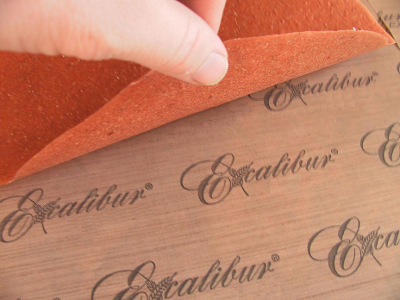 I'm thrilled with the
dehydrator itself, but the fruit leather sheets seem flimsy for the
price. You're not supposed to submerge them when washing, but I
couldn't quite figure out how else to get specks of fruit leather off
since they don't wipe down easily, so maybe it's my fault that they're
already looking a bit crumpled after only three washings?
I'm thrilled with the
dehydrator itself, but the fruit leather sheets seem flimsy for the
price. You're not supposed to submerge them when washing, but I
couldn't quite figure out how else to get specks of fruit leather off
since they don't wipe down easily, so maybe it's my fault that they're
already looking a bit crumpled after only three washings?
But that doesn't explain
why Excalibur couldn't have come up with a solid tray to fit on each
rack that would hold juicy proto-leathers so that they don't drop
through onto the squash on the next rack down. The sideless
sheets also mean I can't use my jiggling trick to quickly smooth fruit
puree to one level, which means I had to spread it with a spoon and had
slightly uneven drying. If I was making my purchase today, I'd be
tempted to try to find a better fruit leather option.
My only other minor
complaint is the intro to drying booklet that comes for free with the
dehydrator. The text doesn't mention blanching at all, which I've
read (and my experiments prove) results in much tastier dried
vegetables. Remember, this is a free publication and do some more
reading on your own.
About the dehydator
itself, though, I have no complaints. If you decide to get
serious about drying and don't live in a near desert climate, this
model is the way to go.
Want more in-depth information? Browse through our books.
Or explore more posts by date or by subject.
About us: Anna Hess and Mark Hamilton spent over a decade living self-sufficiently in the mountains of Virginia before moving north to start over from scratch in the foothills of Ohio. They've experimented with permaculture, no-till gardening, trailersteading, home-based microbusinesses and much more, writing about their adventures in both blogs and books.
Want to be notified when new comments are posted on this page? Click on the RSS button after you add a comment to subscribe to the comment feed, or simply check the box beside "email replies to me" while writing your comment.

They look like the teflon-coated fiberglass that we also use as a peel-ply when making composites. It also is commonly used in the baking industries as material to make conveyors from. We get it from Hardick in the Netherlands. Google for "PTFE fabric", and you'll find lots of suppliers. Look for food-grade quality, though.
You should know that there are different grades of this stuff, that vary in how open they are. It depends on the weave and thread count of the fiberglass used and the amount of teflon used. Some you can breathe through if you hold them in front of you mouth, other grades are more closed. We use the more permeable stuff as peel-ply, but I'd guess you'd want the more closed stuff. (I think we might still have some of the latter around which is pretty much useless to us. Contact me by mail if you want some. It'll have to wait to after the holidays though )
)
The wrinkling you describe is par for the course with the heavier varieties. I think it is caused by either breaking of glass strands or debonding between the teflon coating and the glass.
Folding up the edges of this material without breaking the threads is very difficult. The fiberglass filaments are generally between 3-8 μm in diameter and have a breaking strain of around 2.5%. That puts a lower limit on the bending radius you can achieve. And to make the filamants stay in shape, you would have to heat the teflon to its softening point, shape the material and then cool it down. Unfortunately the melting point is 327 °C (621 °F) but the material will begin to decompose at 350 °C (662 °F), so temperature control would be critical.
Rachel and Silvia --- I don't use disposables like plastic wrap and parchment paper, which is why I was willing to pay a premium price for what I thought would do the job in a more sustainable way. Unfortunately, I'm not so sure these paraflex sheets will last long enough to make the extra plastic worth it.
If I could find a non-stick cookie sheet the right size to fit on top of the trays, that would definitely be my first choice. I just wish Excalibur made something to fit since I think finding an off the shelf option that's the right dimensions will be tough.
Roland --- You made me feel so much better by telling me that PTFE fabric wrinkles even if you don't submerge it! (And that also explains why they didn't make their sheets have sides.) Your explanation of why makes a lot of sense, and makes me wonder if it was a good choice for this application in the first place.
What would you recommend for the material if you were making a non-stick, food-safe sheet that can withstand temperatures of at least 135 degrees Fahrenheit?
I might email you for some of the fabric --- it sounds very enticing if it wouldn't cost you too much to mail. Maybe I could find a way to attach it to a frame of some sort so that it doesn't bend....
Maybe I could find a way to attach it to a frame of some sort so that it doesn't bend....
@Silvia: Make sure you use food-grade plastics. Non food grade plastics might contain harmful additives. Temperature wise, most plastics should be OK.
@Anna: I think this stuff is actually a pretty good choice. Both glass and teflon are inert up to much higher temperatures than occur in the dryer. Since the weave is somewhat porous, it would allow moisture to evaporate from both sides of the fruit leather, which should make the drying go faster. Another good non-stick alternative would be food-grade silicone. Again this is inert up to much higher tamperatures than occur in a dryer and it doesn't stick. But it isn't very permeable to water, so the leather should dry slower when all other parameters are equal. Neither PTFE-coated glass nor silicone will offer a breeding ground for bacteria and molds by themselves. Another reasonable alternative is a stainless steel tray. It conducts heat well, helping the drying process, and it is food safe and easy to clean. And it has edges for keeping in the pulp. Plain steel with a enamel coating on the inside would be OK as well. Aluminium can dissolve in the acids that are found fruit juice, so it is generally not a good choice.
The most effective way of drying fruit pulp is to spray it downward into a column of rising hot air. This is often how instant coffee is made these days. This technique gives the best surface area to volume ratio for drying. But you'd end up with fruit flakes instead of leather. But it would have a much lower water content so it should keep better.
But it would have a much lower water content so it should keep better.
I bought nearly the same model last year - mine doesn't have a timer, but I did get a handful of fruit leather sheets to go with everything else. For the timer, I just plug it into a regular lamp-or-whatever timer. For the fruit leather sheets, I just lay the sheet on the counter, and take a wet washcloth over it. It usually takes a bit of determination and effort, but they get pretty clean without having to submerge or break the fibers.
My one complaint about the dehydrator is that the fan blows hard enough to scatter lighter materials - I dried several different trays of herbs at the same time, and when I was done, I was picking bits of green onion tops out of everything.
Yeah, several people mentioned the "add your own timer" idea in the reviews on Amazon, and you probably would save a few bucks.
I haven't tried drying herbs yet, but I'll have to keep that in mind!
I'm glad to hear from someone who has clearly tried out this model even more thoroughly than I have.
Roland --- (Somehow missed your comment...)
Excellent point about the speedier drying because of the permeability. However, if that's going to make them only last a year, I'd probably prefer slower drying on stainless steel or other solid surface. I guess I'll wait and see how long my current sheets last before getting anything else.
I wouldn't mind fruit flakes, but that sounds like a pretty high tech setup for the home scale!
One negative aspect of steel is that it will stick. But you could try and coat it with a little bit of edible oil or beeswax to act as a release agent.
W.r.t the fruit flakes; I saw it demonstrated on the BBC (with coffee) literally by a bloke in his shed. Using an off-the-shelf spray gun, a steel tube and a propane burner... Definitely not really high-tech IMO.